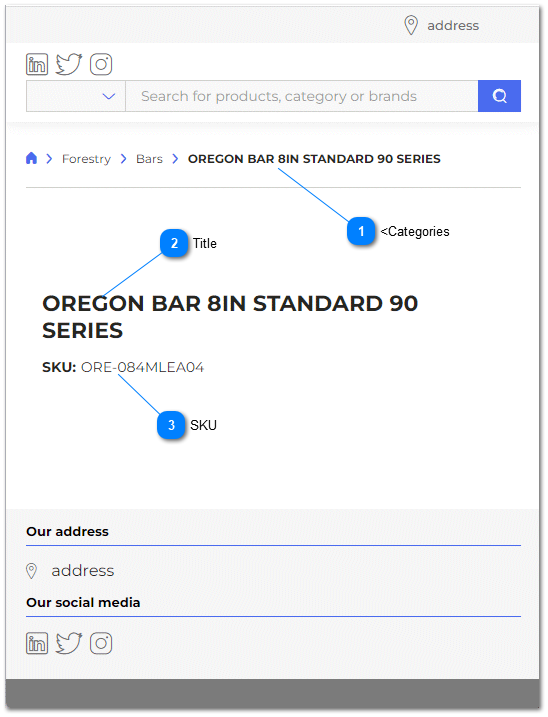Minimum Product Data Requirements
Here we discuss the minimal product data requirements required to use the brand portal functionality included in the PIM. Brand portals are dynamic. In order to function properly data must be present to drive the brand portal. Product Sheets are dynamically generated based on the data stored in the PIM. Data made available to the brand portal will be automatically utilized to enrich the product page content and provide a rich user experience.
The brand portals harnesses the power of structured data to provide users with accurate and up-to-date information, fostering an enriched user experience. In order to render a data driven brand portal the PIM requires a minimum sub set of product data. This foundational information acts as the backbone of the portal, allowing it to showcase core details about products and services. By starting with this subset, the portal establishes a baseline for its content, ensuring that users receive fundamental information about the brand's offerings.
Unlike static websites, the brand portals are dynamic in nature. This is derived from its ability to automatically update content in real-time based on changes in the underlying data and product attributes that are available for rendering.
As the PIM system receives more data, such as comprehensive product specifications, high-quality images, detailed descriptions and related product information, the brand portal can seamlessly incorporate this data into its pages. This automatic enrichment of content results in product pages that are more than just digital placeholders — they become interactive, informative hubs of knowledge.
The underlying PIM data profoundly impacts the quality of content displayed on the brand portal's product pages. The ultimate goal of enriching content through data-driven processes is to create a rich and immersive user experience. To manage the product data and define how that product data is presented to the user, the PIM utilizes 'Views'.
For more information about mapping and restricting data please see the help topic: Mapping and Restricting Data (Views).
A brand portal rendered with the minimum required product data will not provide a rich, informative user experience. Requiring only a minimum subset of data ensures that products can be rendered on product pages and discovered in portal search results. PIMS users are strongly encouraged to provide supplemental product data to enrich product pages for a better user experience. The brand portal is a direct representation of your brand an product line. By providing supplemental product data the brand image is better represented and more likely to engage with buyers and end consumers.
A brand's online presence holds immense significance in engaging with customers and forging lasting connections. A brand portal rendered with only the bare minimum of product data will leave visitors underwhelmed. While this baseline information is essential for rendering products on brand portal and enabling basic search functionality, it doesn't create the immersive experience modern consumers expect. Supplemental product data is the key to unlocking a rich and informative user experience.
Sample brand portal mobile rendering with minimum product data and associated attributes:
Sample brand portal mobile rendering with minimum product data and associated attributes:
To view a sample brand portal mobile rendering with Supplemental Product Data please see the help topic: Supplemental Product Data.


